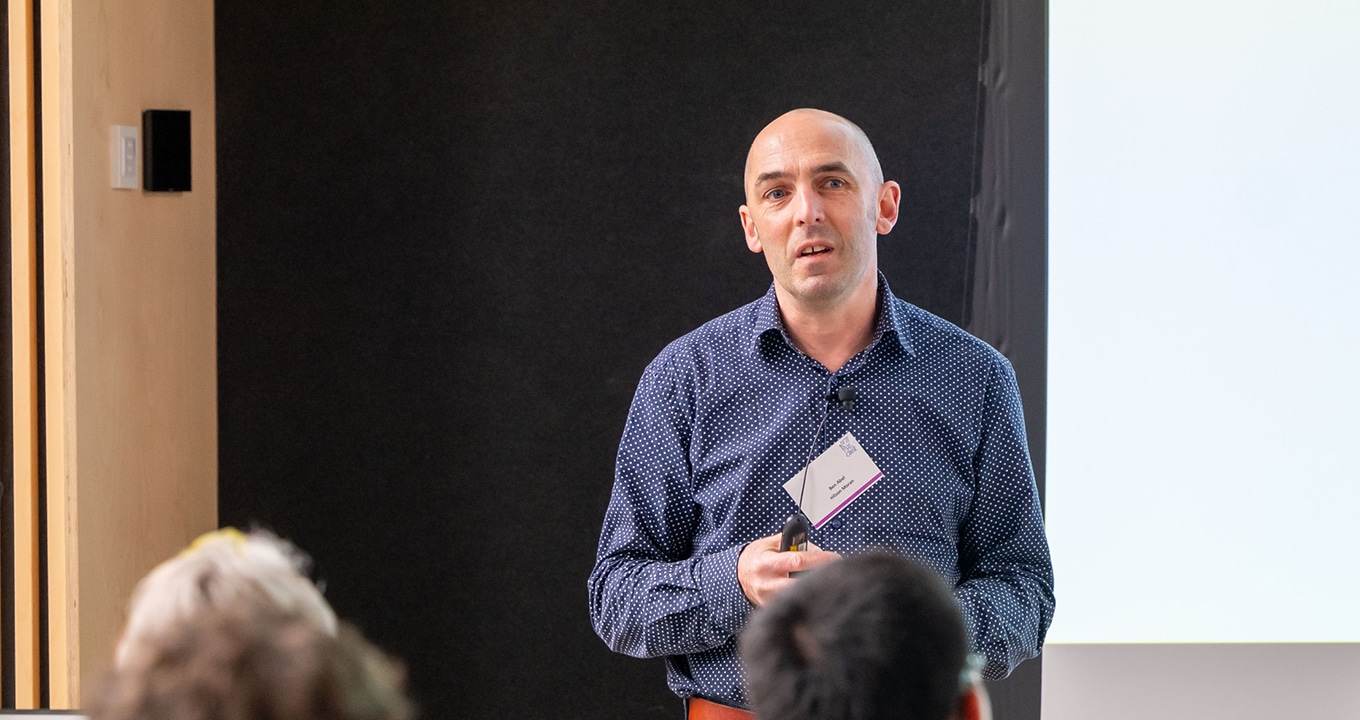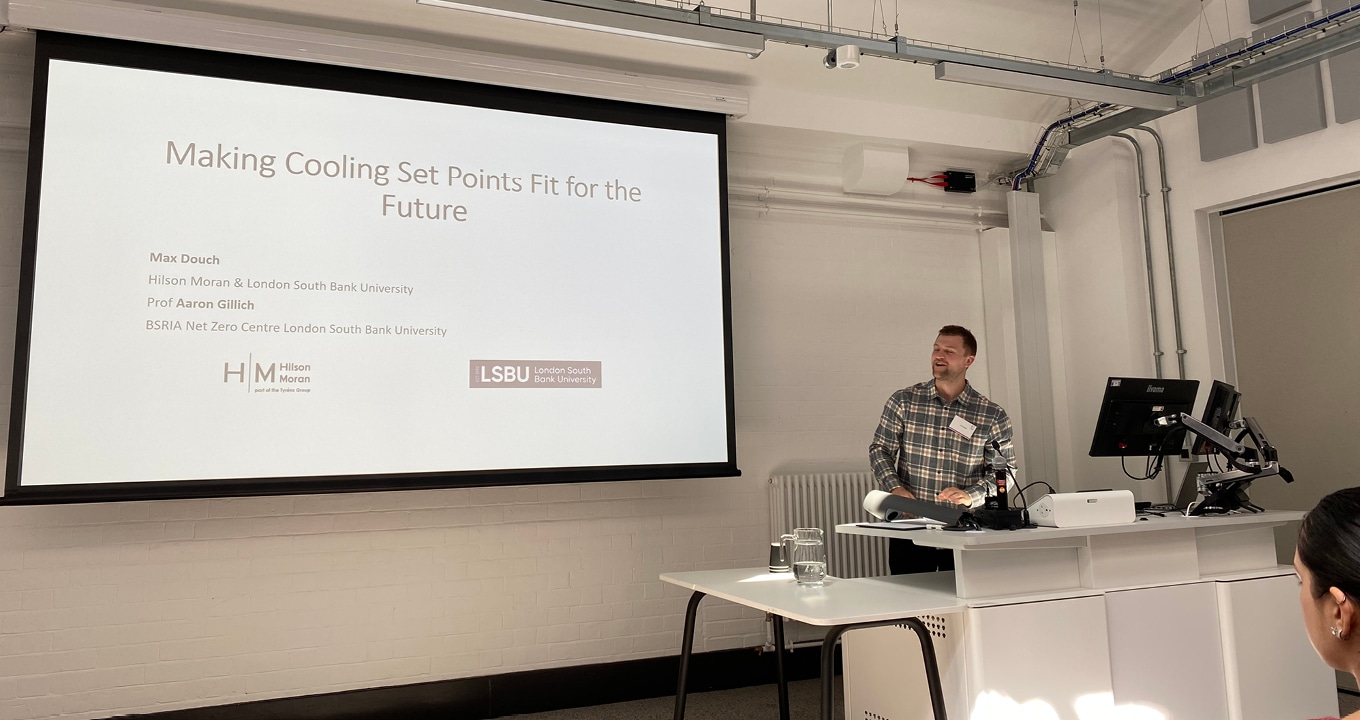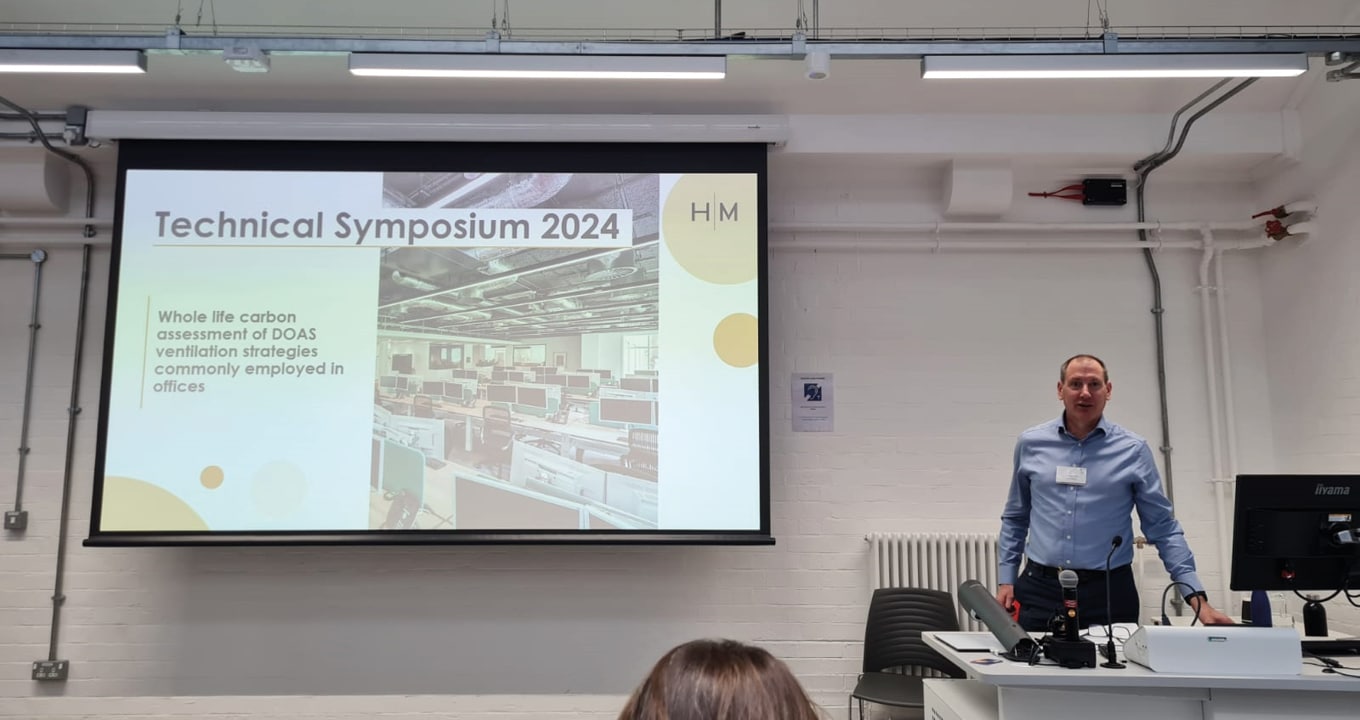The 2024 CIBSE Technical Symposium took place from 11-12 April at Cardiff University, following the theme Fit for 2050 – Delivering buildings and defining performance for a net zero built environment.
Bringing together subject experts and CIBSE members from across the construction industry, Hilson Moran was represented by three technical experts, presenting their peer reviewed white papers across the two day event.
Presenters are carefully selected by the Symposium Steering Committee, who review submitted abstracts that cover impacts of new technologies, processes or policies on the built environment. Summaries from Hilson Moran’s accepted papers are available below, with links to the full papers and presentations available to download from CIBSE website.
Technical Director Ben Abel – A new algorithm for predicting overheating in predominantly naturally ventilated houses using dynamic thermal models
Dynamic thermal models are crucial for predicting indoor temperatures to ensure compliance with overheating building regulations and mitigate health risks associated with high temperatures. However, discrepancies between measured and modelled overheating have been identified, regardless of the dynamic modelling simulation software used. Even extreme adjustments to model setups couldn’t reconcile these differences, indicating a need for algorithmic review and revision. This paper introduces new modelling algorithms, focusing on computational fluid dynamics (CFD) turbulence models to enhance air movement simulation and heat transfer prediction. These improvements could enhance the reliability of building regulations compliance assessments and necessitate changes in overheating analysis processes across the building simulation community.
Technical Director Steve Johnson: Whole life carbon assessment of DOAS ventilation strategies commonly employed in offices
This paper considered the whole life carbon of various ventilation strategies commonly employed in office buildings serviced with 4 pipe fan coil units, to understand the whole life carbon (operational and embodied) of each system. The systems under consideration are:
- DOAS Air handling unit – Air supply to the fan coils at or near room temperature to avoid the risk of condensation and hence the need for insulation to the supply air ductwork.
- DOAS Air handling unit – Air supply to the fan coils at temperatures which would require the ductwork to be insulated.
Mechanical Design Consultant Max Douch – Making Cooling Set Points Fit For the Future- An Overlooked Opportunity to Lower Building Energy Demand
This study examines raising cooling temperatures in buildings to support UK’s net zero objectives, an area lacking exploration in UK literature. It analyses global examples and uses thermal models of a commercial office building to assess energy demand and peak cooling load under various climate scenarios. Results suggest significant reductions in cooling demand and peak loads by shifting from 21°C to 28°C internal temperature. Challenges in implementation due to societal comfort norms are noted, with proposed solutions including incentives, legislation, and occupant control. This highlights the need for updated temperature strategies in a warming climate, impacting building service professionals.







